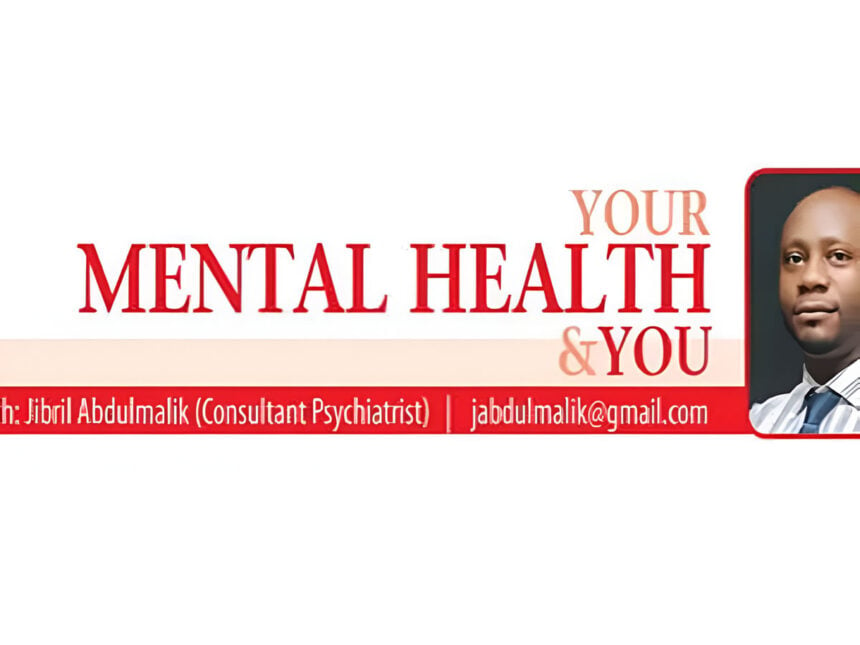Last week, the news filtered out about the sad demise of a medical student at the Obafemi Awolowo University (OAU), Ile Ife, via suicide. This brings to the fore again the rising spate of suicide deaths, especially among young persons. Another recent example is that of a female student who died from suicide in Lagos in the aftermath of the JAMB results. What should we know about suicide, and how can we prevent it, especially for young persons? How can we prevent this avoidable loss of precious human lives?
The World Health Organisation (WHO) estimates that 1 million suicide deaths occur every year. This translates into one suicide death every 40 seconds. The number of attempted suicides annually is about 20 times the number of completed suicides, estimated at 20 million cases worldwide.
Even more alarming is the rising trend of adolescent and youth suicides. Suicide is the second leading cause of death worldwide and the third cause of death among adolescents and young persons aged 10 to 24 years, following accidents and homicide, according to the WHO. We also know that these are also occurring in our settings here in Nigeria.
The very first step towards suicide prevention is identifying the warning signs of suicidal behaviour. While some suicide deaths are impulsive reactions, 80% of those who eventually commit suicide would have given some signs of their intentions before they ultimately carry it out. These signs include expressions such as “I am not good enough”, “I simply can’t cope” and “Everyone will be better off without me”. Other signs may include expressing hopelessness, giving out valuables or talking about what to do if they are no longer alive, loss of interest in planning for the future, social withdrawal and isolation, turning to drugs and alcohol to drown sorrows, and a history of impulsiveness or previous suicide attempt.
When several of these signs are present in an individual, the risk of suicidal behaviour is high.
What should we do if we recognise these warning signs?
Individuals: At the individual level, if you recognise these signs and suspect the individual is at risk, do not dismiss your suspicions. Do not leave them alone, but ensure someone is with them at all times. Let them know you are concerned about them. Condition yourself to listen to them, rather than delivering lengthy sermons and admonitions. Do not show alarm or exhibit judgemental behaviour. Ask specific questions to find out if they are actively planning to do something. The presence of specific planning is an indication of serious intent and should instantly be a red flag to take action. Even if you cannot do all of the above steps, simply recognising that the person is going through emotional pain and providing a listening ear is quite helpful. Reassure them that there is no need to be ashamed or embarrassed, as it is not a sign of weakness or cowardice. Lastly, please go the extra mile to ensure they get a professional evaluation from a qualified mental health professional (psychiatrist or clinical psychologist). This will help them navigate the maze of emotional pain they may be going through and to receive adequate treatment for any underlying medical condition such as depression.
Community: At the community and public level, public awareness and education to understand suicide and other mental health challenges, as well as reducing the associated pervasive stigma, is helpful. This should lead to an increase in help-seeking behaviour and the utilisation of mental health care services, which are readily available in most teaching hospitals as well as the neuropsychiatric hospitals. It is an error to imagine that it is only people who are ‘mad’ that need to see a mental health professional. Improved access and availability of mental health professionals in all health-care facilities should be a government priority.
Media: The media also has an important role to play in suicide prevention. Glamourising and splashing all the gory details should be avoided as much as possible. While it is necessarily important news, such sad occurrences also provide an important avenue to provide education about risk factors and where to seek help. Emphasis should be on the fact that individuals who are depressed can recover and turn things around in their lives with professional help and treatment. The privacy of family members should be protected, and efforts to reduce associated stigma amplified. Lastly, the media has a duty to prevent the ‘Werther Effect’ or copycat suicides following a widely publicised suicide.
Schools: The school environment should allow all students to flourish, learn and develop, regardless of their individual temperaments or dispositions. Bullying, taunting and public humiliations can be devastating for adolescents with fragile egos and low self-esteem. Targeted interventions and support, especially around examination periods, are essential for suicide prevention.
Social Support Network: Lastly, having a support network such as friendly and caring neighbours, religious support groups, a close circle of friends and colleagues at work, and involvement in social activities such as sports are also helpful and protective.
In conclusion, your mental health is in your hands. Let us all watch out for our emotional wellbeing, as well as that of everyone we interact with at home, in the neighbourhood, in schools and at work. Times are difficult and frustrations are rife, but as human beings, everyone appreciates a helping hand when they are down.
WATCH TOP VIDEOS FROM NIGERIAN TRIBUNE TV
- Relationship Hangout: Public vs Private Proposals – Which Truly Wins in Love?
- “No” Is a Complete Sentence: Why You Should Stop Feeling Guilty
- Relationship Hangout: Friendship Talk 2025 – How to Be a Good Friend & Big Questions on Friendship
- Police Overpower Armed Robbers in Ibadan After Fierce Struggle






